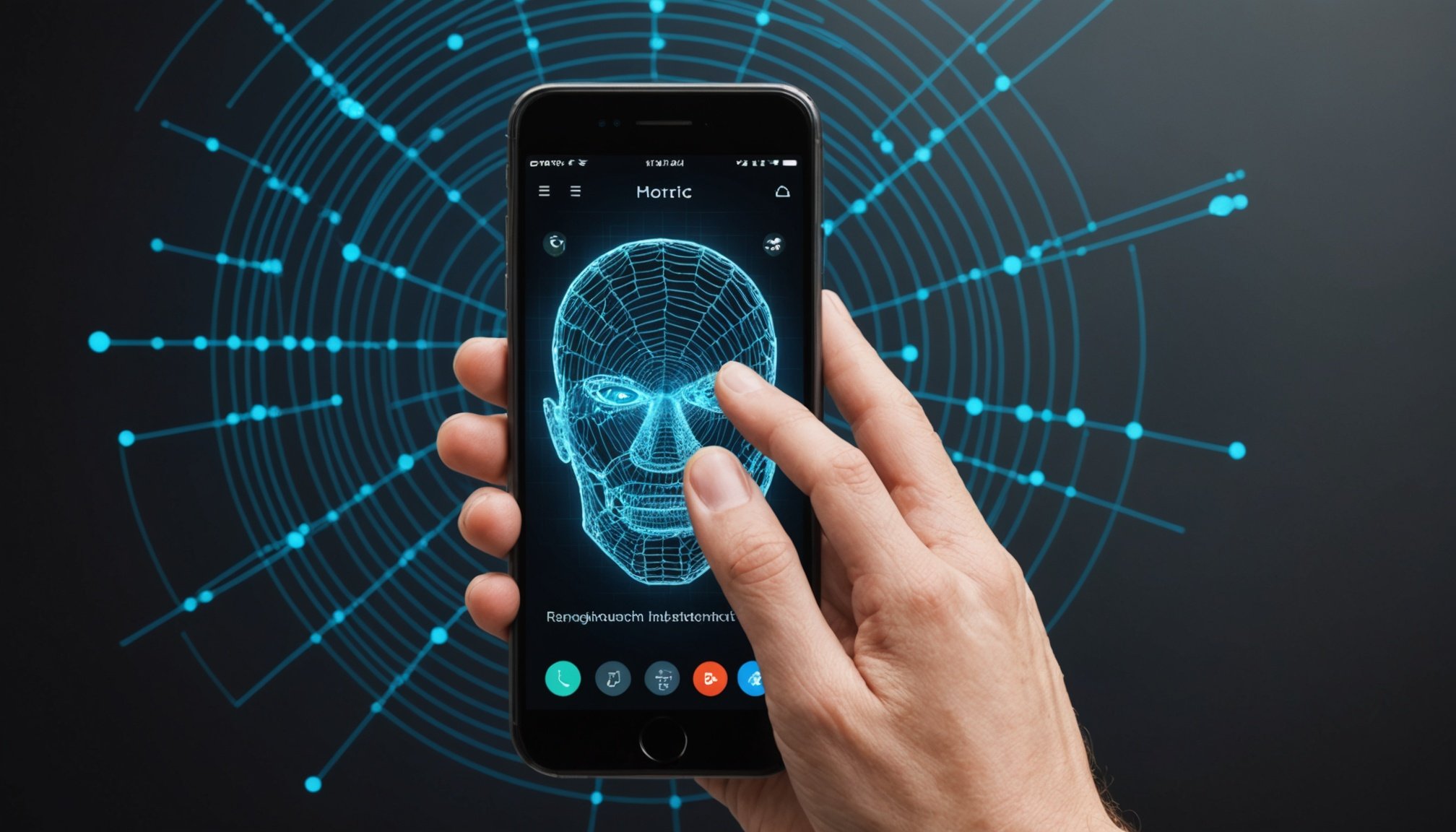Overview of Biometric Authentication
Biometric Authentication refers to verifying an individual’s identity using unique biological traits. These can include fingerprints, facial recognition, or voice patterns, offering a more personal and secure method over traditional passwords. This method plays a crucial role in web applications, where enhanced security measures are continuously sought after to protect sensitive data.
WebAuthn, an emerging standard, is pivotal in this shift. An integral part of the FIDO2 project, WebAuthn allows users to sign in through web apps using their biometrics. It eliminates the reliance on passwords and enhances security by binding credentials to users’ unique biological features. Supporting both client-to-authenticator and client-to-client security, it offers a comprehensive security envelope.
Topic to read : Mastering Distributed Tracing in Kubernetes: A Step-by-Step Guide to Implementing Jaeger
The advantages of using biometric methods are significant. Firstly, they provide enhanced protection against phishing and credential compromise since what a person is – say, their fingerprint – cannot be stolen in the way passwords can. Biometric systems simplify the user experience by eliminating the need for recalling complex passwords, thus balancing security and convenience. Furthermore, with devices increasingly integrating biometric sensors, this form of authentication naturally aligns with consumer expectations and the direction of technological evolution.
Current Trends in Biometric Authentication
Navigating the evolving landscape of biometric technology reveals significant trends that are shaping the way we secure digital environments. Among emerging technologies, multi-modal authentication is leading the charge, combining fingerprint, facial, and voice recognition for enhanced security. This convergence not only heightens accuracy but also reduces false positives. As users engage with these systems, their experience is significantly improved.
This might interest you : Mastering Disaster Recovery: A Step-by-Step Guide to Protect Your Kubernetes Cluster in a Multi-Cloud Landscape
One essential factor in user experience enhancement is seamless integration. As biometric systems become more intuitive, they minimise traditional security step interruptions, resulting in smoother transactions and access processes. Users appreciate the speed and ease of unlocking their devices or authorising payments with just a glance or a touch, leading to wider acceptance.
Market adoption rates for biometric solutions are rapidly climbing as organisations recognise the potential for both enhanced security and consumer convenience. According to industry data, projections indicate continued robust growth, particularly in sectors like finance, healthcare, and travel. This widespread adoption is driven by the promise of reduced fraud, heightened safety, and management of sensitive information more efficiently.
Predictions for biometric authentication include further expansion into new areas such as Internet of Things (IoT) devices and smart home applications. This trajectory suggests that biometric solutions will continue to redefine security and convenience.
Implementation Techniques of WebAuthn for Biometric Authentication
Delving into WebAuthn Implementation involves a blend of server setup, coding the authentication logic, and rigorous testing.
Setting Up the Environment
Success begins with building a server-side architecture catering to biometric authentication needs. This process starts with configuring your server to support WebAuthn. Many developers prefer Node.js for its efficiency and large community support. Utilize libraries like fido2-lib to handle WebAuthn server logic smoothly. Ensure your environment allows seamless communication between clients and biometric devices, making user interaction intuitive and error-free.
Writing the Authentication Logic
A Step-by-Step Guide can be invaluable during coding. First, draft your authentication logic. It usually begins with creating requests, handling responses, and relying on Code Examples to validate credentials. These steps ensure a smooth user experience by maximizing security and minimizing potential friction points.
Testing and Debugging
Robust testing is the hallmark of bulletproof WebAuthn applications. Consider integrating biometric devices and APIs within your test environments to replicate real-world scenarios. Follow best practices for testing biometric authentication systems, like simulating diverse environments and devices. Always prioritize extensive debugging sessions to identify and resolve potential loopholes, ensuring a secure and efficient WebAuthn implementation.
Case Studies of Biometric Authentication in Action
Exploring biometric authentication through real-world applications sheds light on its practicality across various sectors. A detailed analysis of successful implementations reveals the efficiency and security enhancements offered by such technologies.
Industry Examples showcase notable advancements. In the banking sector, facial recognition has streamlined customer verification, reducing transaction times while enhancing security. Similarly, healthcare facilities employ fingerprint scanning to ensure patient records remain confidential yet easily accessible.
These case studies highlight common lessons learned. User feedback consistently underscores the importance of ensuring systems are user-friendly and intuitive. Complex operations or failures in recognition can lead to dissatisfaction, underscoring the need for seamless integration and robust technology.
Recommendations drawn from these real-world applications emphasize several key aspects. First, ongoing system updates are crucial to handle evolving security threats and technology advancements. Second, engaging users in the design and testing phases enhances system usability, reducing errors and increasing adoption. Lastly, ensuring compliance with privacy regulations protects both organisations and individuals.
Overall, these insights demonstrate the transformative potential of biometric authentication when strategically and thoughtfully implemented across diverse industries. By examining these industry examples, businesses can adopt smarter, more secure identity verification solutions.
Challenges and Considerations in Biometric Security
Biometric security offers numerous benefits but is not without its challenges. One of the primary security concerns is the risk associated with data breaches. Unlike passwords, biometric data such as fingerprints cannot be changed if compromised. Furthermore, biometric systems may be susceptible to spoofing attacks, where an impostor uses a fake sample to imitate a legitimate user.
Legal and ethical considerations also play a critical role in the deployment of biometric systems. These systems must comply with data protection laws, such as GDPR, to ensure that biometric information is collected and stored responsibly. Transparency in how biometric data is used and obtaining informed consent from users are crucial steps to address privacy concerns.
To effectively mitigate these risks, companies must adopt best practices. These include implementing multi-factor authentication, which combines biometric verification with other secure methods, like a password or a smart card. Additionally, employing encryption and robust data management strategies helps protect biometric data against unauthorized access and potential misuse.
Educating users about the importance of securing biometric information and ensuring continuous monitoring against new threats can bolster overall security. By considering these factors, organizations can harness the benefits of biometric security while safeguarding user data.
Future of Biometric Authentication and WebAuthn
As the cybersecurity landscape evolves, biometric authentication technologies are set to play a pivotal role. With advancements in facial recognition, fingerprint scanning, and iris detection, these technologies not only bolster security but also streamline user experience. The predictions for the future capabilities of biometric authentication suggest a shift towards more integrated and secure systems.
Upcoming Changes and Innovations
WebAuthn, a cornerstone in this evolution, is expected to see significant updates in its specifications. These changes are poised to enhance security measures by implementing stronger, multifactor authentication processes. Future trends indicate a potential move towards leveraging AI and machine learning to refine biometric precision and reliability.
Implications for Cybersecurity
The implications of these innovations are profound. By embedding biometric authentication more deeply into everyday applications, the reliance on traditional passwords is likely to decrease, thereby reducing vulnerability to identity theft. The evolution of WebAuthn is critical in crafting robust defences against cyber threats, making it essential for organisations to stay informed and implement these technologies effectively.
In essence, embracing the future trends of biometric technologies and WebAuthn evolution will be instrumental in redefining secure access in our increasingly digital world.
Conclusion
In this article, we’ve navigated the intricacies surrounding biometric authentication. By implementing biometric solutions, developers can significantly elevate user security and streamline access processes. Summary highlights the seamless integration of these technologies as well as potential barriers overcome through deliberate design and testing.
Exploring opportunities within biometric authentication is an essential step for developers. They should actively seek insights from case studies and industry trends to adapt these solutions effectively. As the demand for secure and user-friendly authentication methods grows, crafting strategies around biometrics can provide substantial competitive advantages.
Additionally, staying updated with WebAuthn advancements is of paramount importance. Developers should routinely check for updates or changes in standards which can impact how biometric systems interact with various platforms. As WebAuthn continues to evolve, adapting technology in line with these updates ensures compliance and maximises security benefits.
In conclusion, embracing biometric authentication is not merely about implementing a trend; it’s about shaping a safer digital landscape for users. By integrating advanced security measures and continuously refining them, developers can harness the power of new-age technology effectively and responsibly.











